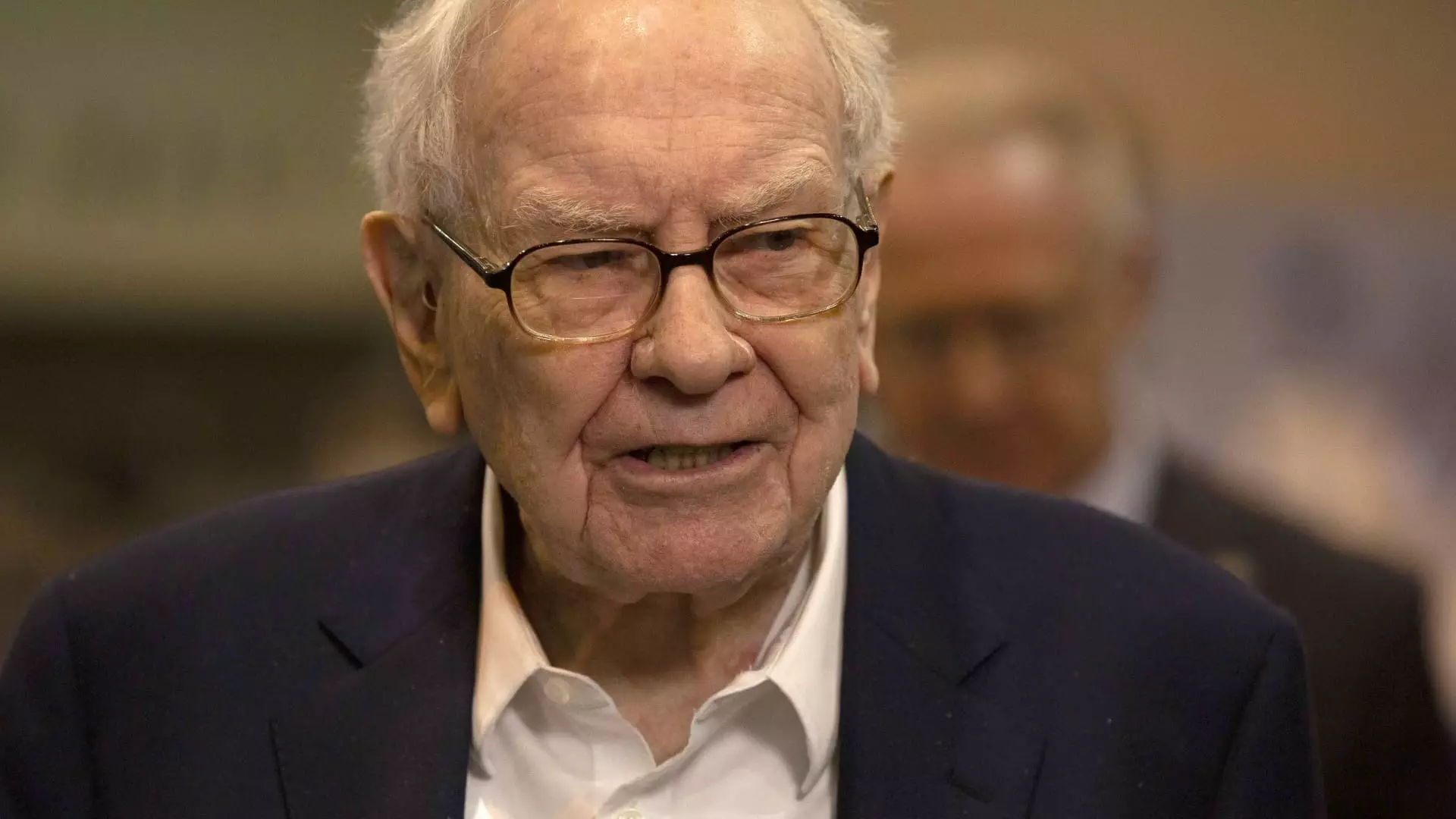In the third quarter of 2023, Berkshire Hathaway, the investment conglomerate helmed by legendary investor Warren Buffett, experienced a significant uptick in its cash reserves, surpassing an astonishing $325 billion. This strategic accumulation of cash has raised eyebrows among investors and market analysts alike, prompting deeper scrutiny into Buffett’s selling strategies and the company’s overall fiscal health. The recent earnings report reveals not only a record cash pile but also highlights the subtle, nuanced movements within Berkshire’s investment decisions that could signal a larger strategy at play.
Warren Buffett’s reputation as a long-term investor often contrasts sharply with the recent trend observed in Berkshire Hathaway’s portfolio management. Notably, the decision to divest from key equities, including substantial positions in Apple and Bank of America, marks a significant change in Buffett’s approach. During the third quarter, Berkshire sold approximately 25% of its Apple holdings, marking the fourth consecutive quarter of reduced investment in this tech giant. Moreover, substantial profits were realized from shedding a significant portion of its Bank of America shares, amounting to over $10 billion since mid-July.
This strategic selling contributes to a daunting total of $36.1 billion worth of stock sold by Berkshire during the quarter. By not repurchasing shares during this period—an unusual move for the conglomerate—Buffett appears to emphasize a careful recalibration of his investment focus without inflating the company’s share price beneath its potential intrinsic value.
More than just a preference for liquidity, Berkshire’s swelling cash reserves could indicate Buffett’s cautious stance on market conditions. Operating earnings dipped to $10.1 billion, approximately 6% less than the previous year, primarily attributed to challenges within insurance underwriting. Analysts, observing this dip and Berkshire’s reluctance to invest further in its own shares, are suggesting that the “Oracle of Omaha” remains wary of potential economic downturns amid the backdrop of fluctuating interest rates.
Despite the robust overall performance of the market this year—with Berkshire Hathaway’s shares gaining 25% against the S&P 500’s 20.1%—the looming presence of rising interest rates, particularly the 10-year Treasury yield surpassing 4%, has led to a cautious environment. Noteworthy investors, including Paul Tudor Jones, have expressed concerns over unsustainable fiscal deficits, leading to speculation that Buffett’s selling could be a proactive response to forthcoming legislative shifts that might affect capital gains taxes.
The implications of Berkshire Hathaway’s cash accumulation extend beyond mere financial metrics—they signify a strategic foresight that Buffett has long been known for. As inflation trends indicate a potential easing and hopeful recovery from economic volatility, the resulting political landscape may pose challenges for fiscal stability. Participation in the upcoming presidential elections suggests that significant spending cuts may not be forthcoming, further complicating the fiscal landscape.
Buffett appears to be positioning Berkshire for potential opportunities that may arise from economic fluctuations, a thought process that he has exhibited throughout his investing career. With his historically conservative investment style, he remains steadfast in his belief that “great companies at fair prices” will yield long-term gains, even amidst uncertainty.
Berkshire Hathaway’s robust cash reserves signify more than just financial stability; they reflect a calculated approach to navigating an increasingly complex market environment. Warren Buffett’s recent stock-dumping spree, amid record-level cash hoarding, raises essential questions about the nature of upcoming investments and the overarching strategic vision for the conglomerate.
As Berkshire continues to evaluate its investment landscape, the alignment of Buffett’s long-term objectives with tactical short-term actions will likely reveal deeper insights into his perspective on economic cycles, market volatility, and the potential for future growth. As we move forward, investors and analysts alike will be keenly observing how this multifaceted strategy unfolds in the quarters to come. The intricate dance between liquidity management and value investment will undoubtedly shape the narrative of this storied firm for years ahead.

